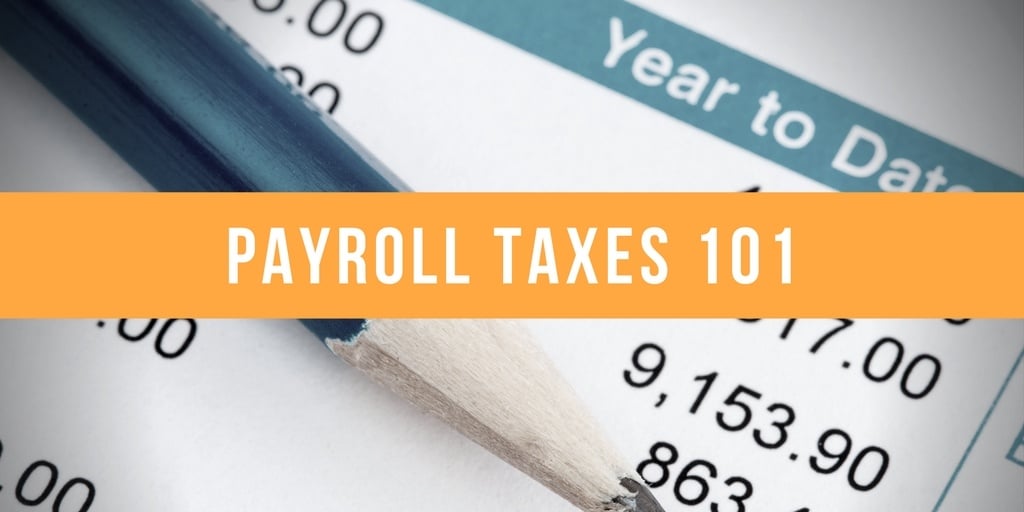The mazelike world of payroll taxes can be perplexing for employers. The key to breaking through the initial confusion is to identify the two categories of payroll taxes: employee taxes, which are withheld from employees’ wages; and employer taxes, which are the employer’s portion of taxes. Employee and employer taxes are imposed on federal, state and local levels – knowing which ones pertain to your business is an essential element of staying in compliance and avoiding payroll tax penalties.
This handy guide provides a basic understanding of payroll taxes, including withholding, remittance and reporting guidelines, plus important tips for employers who outsource payroll duties.
Federal Income Tax
Employers are required to withhold federal income tax from employees’ wages. Federal income tax withholding is based on the IRS tax withholding tables and IRS Form W-4, Employee’s Withholding Allowance Certificate, which you should have your employees complete upon hire and update annually.
To determine how much federal income tax to withhold, use the withholding table in IRS Publication 15 that matches the employee’s taxable wages, payroll period, and W-4 information – that is, filing status and number of allowances. If the employee claims exemption from withholding on the W-4, do not withhold federal income tax for that employee.
Social Security and Medicare (FICA) Taxes
FICA stands for Federal Insurance Contributions Act, which governs the collection of Social Security and Medicare taxes. Employers must withhold FICA taxes from employees’ wages plus pay their own portion of FICA taxes, which are based on a percentage of each employee’s wages. FICA taxes are administered by the IRS and Social Security Administration.
The rates for Social Security and Medicare taxes are published annually in Publication 15.
| Social Security Tax | 2016 |
| Employer/Employee Each | 6.2 percent on wages up to $118,500 |
| Medicare Tax | 2016 |
| Employer/Employee Each | 1.45 percent on all wages |
Employees who earn over $200,000 in a calendar year are subject to additional Medicare withholding of 0.9 percent, which applies only to the amount that exceeds $200,000. Only the employee pays this additional tax.
State Income Tax
At the time of this writing, nine states do not require state income tax withholding: Alaska, Tennessee, Wyoming, Florida, Nevada, Texas, Washington, South Dakota, and New Hampshire. You must withhold state income tax for employees in all other states, according to the rules of the state revenue agency.
Local Payroll Taxes
The local government may require that you withhold city, county or other forms of local taxes from employees’ wages. In some cases, only the employer pays local payroll taxes. The state or local revenue agency can advise you on your local payroll tax obligations.
Federal Unemployment Tax
Also called FUTA tax, federal unemployment tax is an employer-only tax. As listed in Publication 15, the FUTA rate for 2016 is 6.0 percent up to the first $7,000 paid to each worker for the year. However, most employers do not pay this rate. If you paid your state unemployment taxes as required, you can typically take a credit of up to 5.4 percent against your FUTA tax, which would bring your FUTA rate down to 0.6 percent.
State Unemployment Tax
Also called SUTA tax, state unemployment tax is an employer-only tax. Each state is responsible for determining unemployment rates for new and existing employers. New businesses are given a new employer rate, which increases or decreases over time depending on how many unemployment claims have been drawn on the employer’s account. Generally, the state unemployment agency sends employers their unemployment rate and the annual wage base for the following year by the end of the current year.
Remitting Payroll Taxes
Employers must deposit all federal taxes via the Electronic Federal Tax Payment System (EFTPS). After enrolling in the system and receiving your credentials, you can use the EFTPS to pay federal payroll taxes due.
Federal income tax and FICA taxes withheld plus the employer’s portion of FICA taxes must be paid together to the IRS, which has two deposit schedules for those taxes: monthly and semiweekly. The schedule is determined by your total tax liability, as reported on Form 941, during a defined lookback period. Up to $50,000 in reported taxes equates to a monthly schedule and over that amount puts you on a semiweekly schedule. The lookback period for calendar year 2016 is July 1, 2014, to June 30, 2015. See Publication 15 if you are a Form 944 filer.
Generally, if your FUTA liability is more than $500 in any quarter, the deposit is due to the IRS by the last day of the month that follows the end of the quarter. If your liability is $500 or less, you do not have to make a deposit. Simply carry over the amount to the next quarter and make the deposit when the liability exceeds $500. Exceptions apply during the fourth quarter, so be sure to review Publication 15 for details.
Contact your state/local revenue agency for guidelines on remitting state/local payroll taxes.
Reporting Payroll Taxes
Employers must report all federal payroll taxes withheld plus their own portion of taxes to the IRS on the appropriate forms.
Report federal income tax and FICA taxes withheld along with your share of FICA taxes quarterly on Form 941, Employer’s Federal Quarterly Tax Return by the end of each quarter. Alternatively, you can report these taxes annually on Form 944, Employer’s Federal Annual Tax Return if you have the IRS’ written consent. Small employers with annual tax liability of $1,000 or less may qualify to file annually on Form 944.
Report your annual FUTA liability on Form 940, Employer’s Annual Federal Unemployment (FUTA) Tax Return by January 31.
Report wages and other compensation paid to an employee and taxes withheld for the employee annually to the Social Security Administration (SSA) on Form W-2, Wage and Tax Statement. The Protecting Americans from Tax Hikes Act (PATH) of 2015 mandates that employers send W-2s to employees and the SSA by January 31, starting with the 2016 forms. Before PATH, electronic filers had more time to submit W-2s to the SSA. Now, electronic filers no longer have the opportunity to make last-minute changes before submitting W-2s to the SSA. This is a big change to employers’ year-end timeline and it is recommended that year-end planning begin in October to ensure all deadlines are met.
For state/local reporting guidelines, contact the state/local administering agency.
Tips for Employers Who Outsource Payroll
Many employers enjoy the benefits of outsourcing payroll duties. If you outsource, it’s important to know that according to the IRS, you are ultimately responsible for payroll tax errors that a third party makes, such as filing returns late or failing to make timely deposits – all of which can lead to penalties and interest due. To reduce the likelihood of third party errors:
- Designate a capable onsite employee to double-check the provider’s work, including paycheck deductions and tax statements.
- Avoid changing your business address to the payroll provider’s, as this can hinder your ability to receive important notices about your business from the IRS.
- Ensure the provider is using EFTPS to make federal payroll tax deposits and register for your own EFTPS account so that you can verify the timeliness of payments made by your provider.
- File a complaint with the IRS using Form 14157, Complaint: Tax Return Preparer if you suspect that your provider is improperly or fraudulently handling your tax deposits or filings.
This guide covers the most common payroll taxes, but depending on your location, other payroll tax laws may apply. It’s therefore vital that you check with your state/local revenue agency to understand your payroll tax obligations.
From a federal standpoint, IRS Publication 15, Employer’s Tax Guide, is the ideal resource for employers. If you’re still in doubt after reviewing Publication 15, seek clarification from the IRS, your CPA, or your payroll provider.




